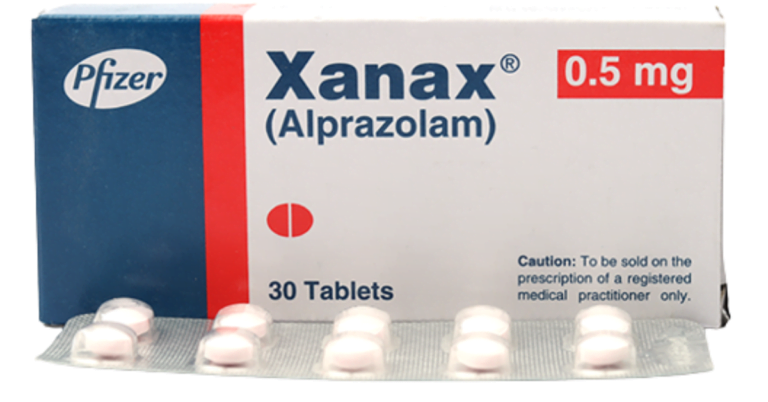How Long Does OxyContin Stay in Your System? A Comprehensive Guide to Managing Its Use
OxyContin is a prescription opioid pain medication containing oxycodone. It is commonly used for treating moderate to severe pain, and is often prescribed to people…
OxyContin is a prescription opioid pain medication containing oxycodone. It is commonly used for treating moderate to severe pain, and is often prescribed to people who are experiencing chronic pain. However, there is growing concern over the misuse and addiction potential of OxyContin, as well as the potential for overdose and other adverse effects. One of the questions that people may have when taking OxyContin is how long it stays in their system. In this article, we will explore the answer to this question and provide helpful information for those who are interested in learning more about OxyContin and its effects.
Table of Contents
How Long Does OxyContin Stay in Your System?
The amount of time that OxyContin stays in your system depends on a number of factors, including the dose of the drug, how often it has been taken, and the individual’s metabolism. In general, OxyContin has a half-life of around 3-4 hours, meaning that it takes this amount of time for the drug to be metabolized and eliminated by the body. However, it can take up to 24 hours for the drug to completely leave your system.
It is important to note that the effects of OxyContin may last longer than the drug itself is present in your body. This is because OxyContin can cause long-term changes to the brain and nervous system, which can result in lasting effects on mood, behavior, and cognition. Additionally, withdrawal symptoms may occur after OxyContin has been eliminated from the body, which can last for days or even weeks.
Factors That Affect How Long OxyContin Stays in Your System:
There are several factors that can affect how long OxyContin stays in your system, including:
- Dosage: The amount of OxyContin taken will impact how long the drug remains in the body. Higher doses will take longer to be eliminated.
- Frequency of use: If OxyContin is used regularly over a prolonged period of time, it will take longer to leave the body than if it is used only occasionally.
- Metabolism: Each person’s metabolism is different, which means that some people will process OxyContin more quickly than others. Those with a slower metabolism will have the drug remain in their system longer.
- Body composition: A person’s body composition, including their weight, body fat percentage, and muscle mass, can also affect how long OxyContin stays in their system.
- Hydration: Staying hydrated can help the body to eliminate OxyContin more quickly. Drinking plenty of water can also help to flush the drug out of the system.
What Are the Effects of OxyContin?
OxyContin is a powerful pain medication that can have a number of effects on the body and mind. Some of the common effects of OxyContin include:
- Pain relief: OxyContin is primarily used to treat pain, and can be effective at reducing moderate to severe pain.
- Euphoria: OxyContin can cause feelings of euphoria, which is one of the reasons why it is sometimes abused.
- Drowsiness: OxyContin can cause drowsiness, and can make it difficult to stay alert and focused.
- Respiratory depression: OxyContin can slow down breathing, which can be dangerous in high doses.
- Nausea and vomiting: OxyContin can cause nausea and vomiting, especially if taken on an empty stomach.
- Constipation: OxyContin can cause constipation, which can be a side effect of opioids in general.
- Addiction: OxyContin has a high potential for addiction, and can be abused for its euphoric effects.
- Overdose: OxyContin can cause an overdose, which can be fatal.
How is OxyContin Metabolized and Eliminated from the Body?
When OxyContin is ingested, it is absorbed into the bloodstream through the gastrointestinal tract. From there, it travels to the liver, where it is metabolized by a group of enzymes known as cytochrome P450. The primary metabolite of OxyContin is oxymorphone, which is a more potent opioid than oxycodone.
After being metabolized in the liver, OxyContin and its metabolites are eliminated from the body through urine and feces. The majority of the drug is excreted in the urine, with a smaller amount eliminated in the feces. The half-life of oxycodone, the active ingredient in OxyContin, is approximately 3-4 hours. This means that it takes this amount of time for half of the drug to be eliminated from the body.
It is important to note that the length of time that OxyContin can be detected in the body can vary depending on the type of drug test used. For example, OxyContin can be detected in urine for up to 3-4 days after the last dose, while it may be detectable in hair for up to 90 days. Blood tests can detect the drug for up to 24 hours, and saliva tests can detect it for up to 48 hours.
Tips for Managing OxyContin Use:
If you have been prescribed OxyContin for pain management, it is important to use the drug as directed by your healthcare provider. Here are some tips for managing OxyContin use:
- Take the medication as directed: Only take OxyContin as directed by your healthcare provider. Do not take more than prescribed or take it more frequently than recommended.
- Do not share your medication: Do not share your OxyContin with others, as it is a highly addictive drug and can be dangerous if misused.
- Store the medication properly: Keep OxyContin in a secure place out of reach of children and others who may misuse it.
- Avoid alcohol: Do not drink alcohol while taking OxyContin, as it can increase the risk of dangerous side effects.
- Seek help if you are struggling with addiction: If you are struggling with addiction to OxyContin or other opioids, it is important to seek help from a healthcare provider or addiction specialist.
Related Article: How Long Does Xanax Stay in Your System?
Conclusion:
In summary, OxyContin is a powerful prescription opioid pain medication that can be effective for managing moderate to severe pain. However, it is important to use the drug as directed and to be aware of its potential for abuse, addiction, and overdose. The amount of time that OxyContin stays in your system can vary depending on several factors, including dosage, frequency of use, metabolism, body composition, and hydration. If you have any questions about OxyContin or its effects, it is important to speak with your healthcare provider.
Related Article: Can you snort Tramadol?
References:
- Baselt, R. C. (2017). Disposition of toxic drugs and chemicals in man (11th ed.). Seal Beach, CA: Biomedical Publications.
- Cone, E. J., Caplan, Y. H., Black, D. L., Robert, T., Moser, F., & Byrnes-Blake, K. (2006). Oxycodone, noroxycodone and oxymorphone in urine: The influence of urinary pH. Journal of Analytical Toxicology, 30(8), 562-568.
- Manchikanti, L., Singh, A., & Damron, K. S. (2006). Age-related prevalence of prescription opioid abuse in the United States. Pain Physician, 9(4), 265-275.
- Peckham, A. M., Fairbanks, R. J., Sclar, D. A., & Goldstein, J. L. (2014). Prescription opioid abuse rates and the passage of state medical marijuana laws. Journal of the American Medical Association, 311(3), 246-248.
- Rauck, R. L., & Buchheit, R. T. (2013). Oxymorphone extended release for chronic pain: A review of pharmacokinetics, efficacy, and safety. Pain Practice, 13(5), 405-414.
Related Article: How long does Adderall Last?






